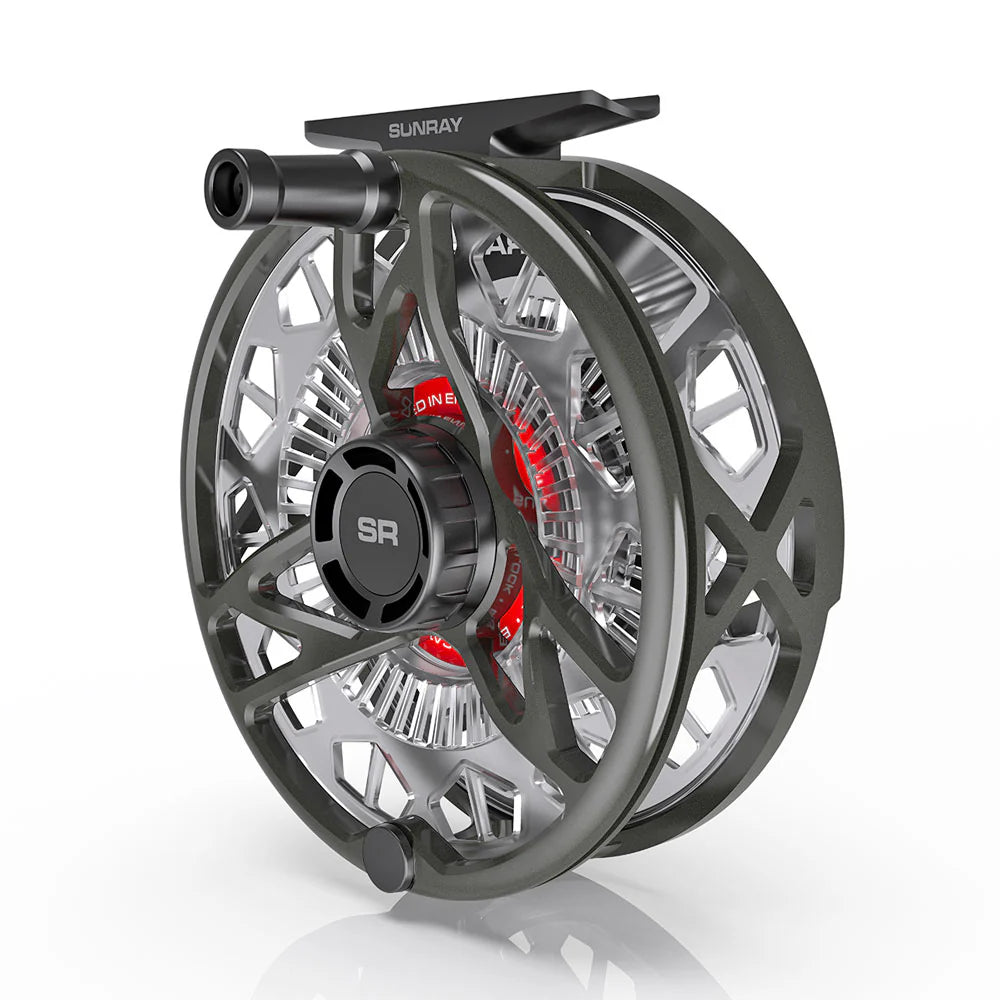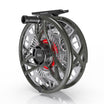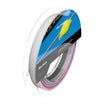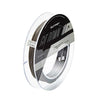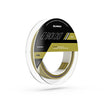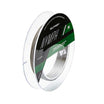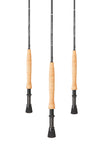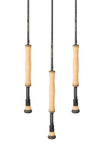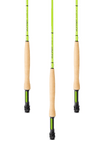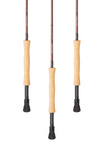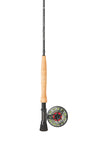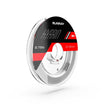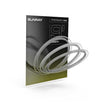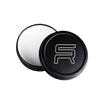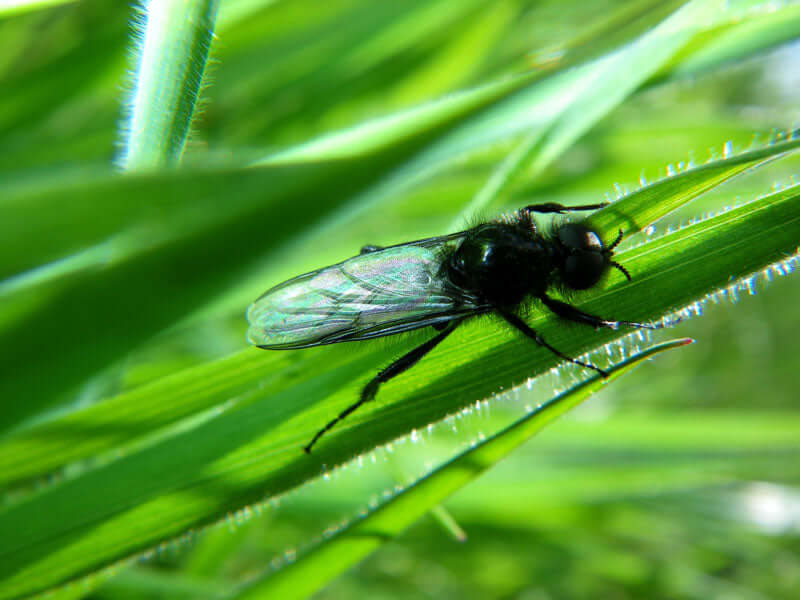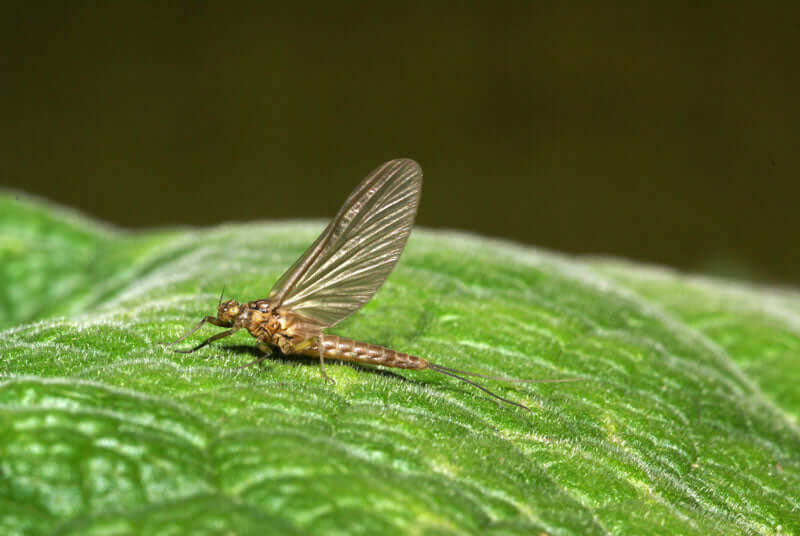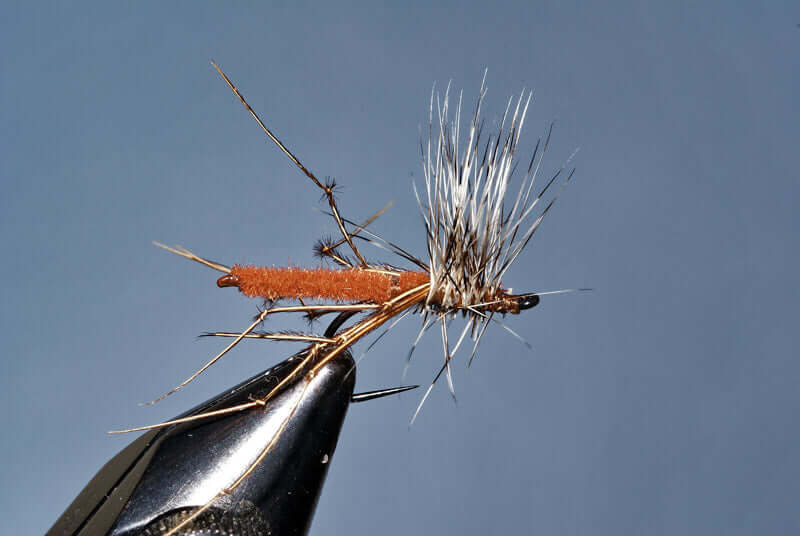Written with thanks by by Dave Southall
Terrestrials, black gnats & hawthorn flies
Late April is the start of ‘Terrestrial Time’. The 25th of April is St. Mark’s Day, the time when the Hawthorn Fly (Bibio marcii) traditionally appears. Some years there is a glut of these relatively big gangly-legged Bibionids: at such times, on sunny, breezy days clouds of them may be seen taking shelter behind bankside tree-cover. They are not particularly strong fliers & many get blown onto the river surface where they get trapped into the surface film, easy prey for the trout. Any suitably sized black fly will work but for aesthetic reasons I like a reasonably imitative pattern. I only apply floatant to the wing so that the body subsides into the surface, like the real thing & also this ‘anchors’ the fly into the surface thus resisting micro-drag. If a dead-drift fails to tempt the fish the application of tiny twitches to simulate a struggling fly can be very effective. Close range fishing with a long rod & light line is a big advantage when applying subtle movements; if the fish aren’t too big a long Tenkara rod with a level line of 8lb fluorocarbon plus tippet is ideal: alternatively a 10’ or longer light-line rod with a micro nymph line & 12’ leader would be my choice.

Hawthorn Fly (male)

Hook: Size 14 short shank e.g. Tiemco 206BL or similar
Thread: Black 8/0
Extended Body: Black Andre Brun Polychenille
Hackle: Black cock trimmed underneath
Wing: White poly yarn
Head & Thorax cover: 2mm thick Black sealed cell foam
Legs: Knotted peacock herl
May is for me the Black Gnat (Bibio johannis) month. This is a smaller Bibionid, best imitated on a size 18 hook (18 short shank if tying a pattern with an extended body). As with the Hawthorn Fly, clouds may be seen sheltering behind trees & hedges on windy, sunny days & they frequently get blown onto the river surface. Some of these casualties will be mating pairs & a Double Badger is a good, simple pattern to imitate these, check out Peter Arfield’s You Tube video https://www.youtube.com/watch?v=Ta-o0206Fvs .

Black Gnat (female)
Hook: Size 18
Thread: Black 8/0
Body: Fine black poly dubbing
Hackle: Black cock trimmed underneath
Wing: White poly yarn
If you see large numbers of either of these flies on the water you might well expect that any rising fish are taking them but beware as there are times when the trout for some inexplicable reason are focused on taking something completely different. I well remember 2 days whilst guiding on Driffield Beck when the river was covered with both Hawthorn Flies & Black Gnats that were being totally ignored. Instead the fish were vigorously taking ting Agapetus Sedge Pupae (see my earlier Blog on the importance of Agapetus Pupae). I have known other times when tiny Midges have been the preferred choice of the fish; so keep an open mind & use your eyes.


